Capers are those little green ‘berries’ that you can buy either packed in salt or pickled in jars. Their sharp and distinctive, piquant flavour is an essential ingredient in many Mediterranean dishes. Spaghetti alla puttenesca is chockers with capers, or you could try caper butter on crusty bread, or capers as a stuffing for fish…yum! But did you know that they’re not actually a berry or even a fruit at all, but the unopened flower bud of the caper bush?
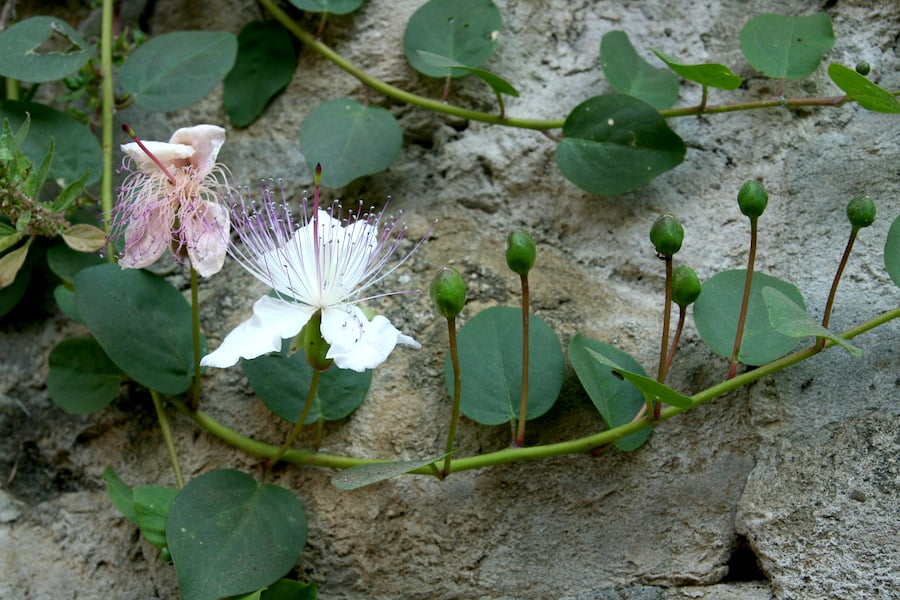
Caper bush, Capparis spinosa, growing in northern Italy showing unopened flower buds ready for harvesting
Caper bush, Capparis spinosa (or also Capparis spinosa var rupestris and Capparis spinosa var inermis), produces these unopened flower buds, which have been used in cooking for over 5000 years. Cleopatra was said to have served them at feasts to win the love of both Mark Anthony and Julius Caesar. Now that’s a caper! They are also reputed to have medicinal properties , such as treating dermatitis.
Caper bush grows well in very dry conditions as they come from the Mediterranean, northern Africa and the Middle East, which means they prefer similar conditions to grapes, olives and pistachios. Morocco, Spain, Italy, Greece and Turkey all have commercial caper growing industries. In Australia, capers are grown In both Western and South Australia such as on the dry rocky slopes above the Murray River with no extra irrigation. In the USA, caper bush thrives in coastal California, and they’re grown successfully in South Africa and New Zealand as well. (See seed/plant suppliers below.)
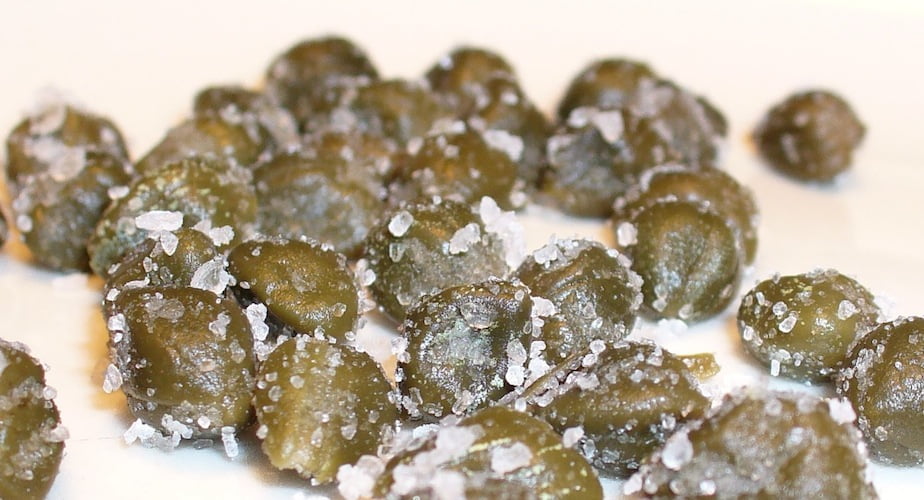
Salted capers Photo James F. Carter
So why grow them yourself? Do you eat capers, or discreetly pick them out of the restaurant food you’ve ordered? Chances are that those little shrivelled up green things that you might not like are often inferior quality imported capers that haven’t been packed in the right medium. You also can’t buy organic capers so you might want home grown to avoid those additives you don’t want to eat. And because you’ve picked and pickled them fresh, they’ll have a much better and more intense flavour.
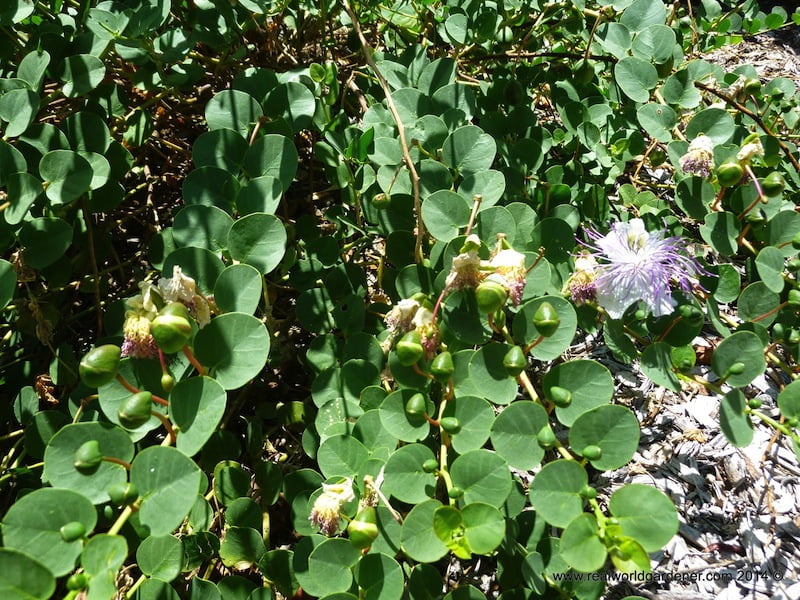
Caper bush, showing the long flowering stems and rounded leaves
Caper bush grows to only 1 metre (3ft) tall, and spreads to about 1.5m (5ft) wide. It has rounded grey-green leaves and a sprawling habit, so it also makes a good spill-over plant at the top of a wall, which is often how you see them being grown in Italy. They even grow out of crevices in rocks and building (including the Colosseum in Rome). They also make good espaliers, which means the flower buds are also easy to see and pick.
Some varieties have sharp spines but most of the commercial varieties are thornless. It’s a long-lived, low maintenance plant as it doesn’t need any supplementary watering after establishment and will grow on poor, stony or sandy soils. The deep root system can access water deeper in the soil than other surrounding plants, and caper bushes also have delicate roots right on the surface that pick up the morning dew. They do need FULL sun – that’s at least 6 hours of intense sunlight each day, and also well-drained soil. Commercial plantings are often on top of 200-300mm of mounded soil to ensure good drainage. You can add a bit of lime and compost at planting.
Caper bush likes hot summer temperatures and low humidity – apparently the leaves will sometimes develop odd pock marks on the surface if the humidity it too high. But it’s also very frost hardy, growing happily down to Zone 7. In cold climates (less than minus 10º C = 15º F) you can grow them in a pot and bring them inside during the winter. Caterpillars are the main pest threat, especially during summer.
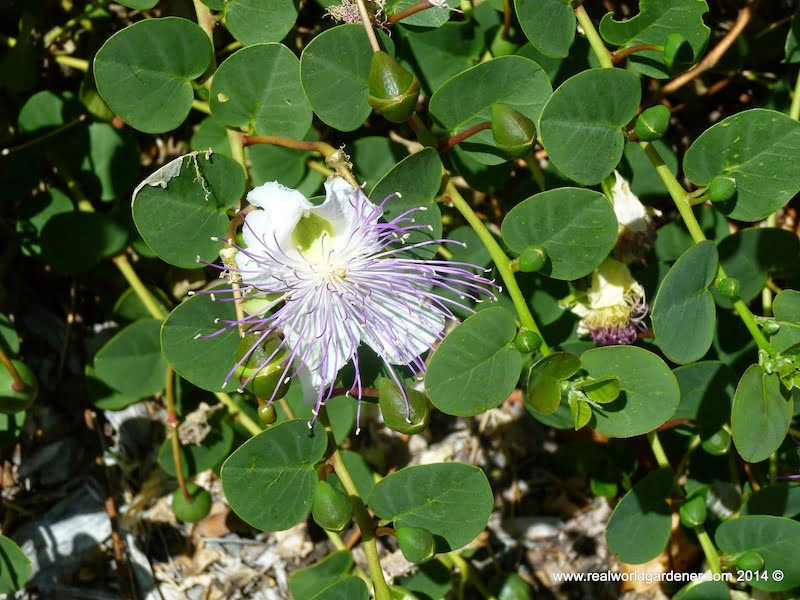
Caper flower
The fragrant flowers (if you haven’t harvested all the buds) are very pretty, with long purple stamens but they only last for one day, like a hibiscus.
Pruning: caper bush is (mostly) winter dormant/semi-deciduous and this is the time to prune it right back to a stump, to encourage lots of new flowering shoots during the following summer and to make a much more attractive, compact bush.
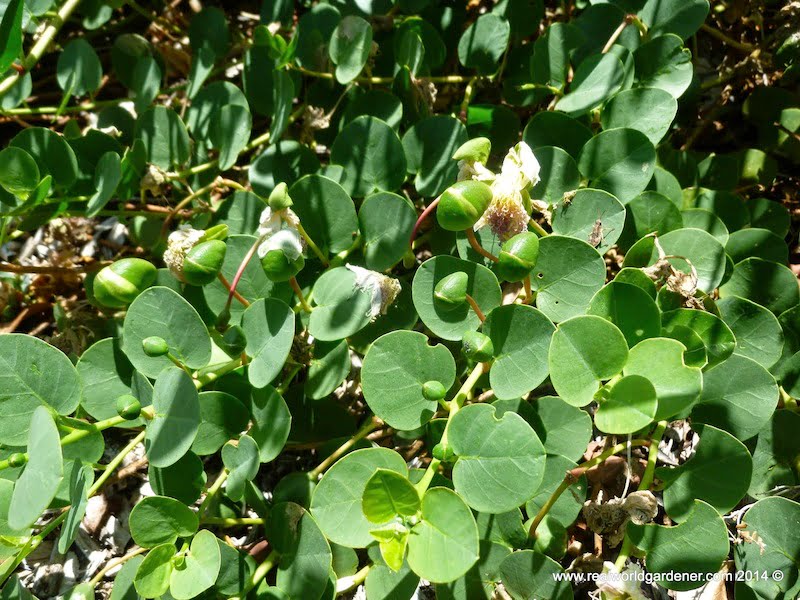
Tight caper buds ready for harvesting, and some that have already split, revealing the flower petals
Harvesting caper buds: you need to pick them when the bud is still nice and tight, which means early in the morning is the best time before the bud starts to unfurl in the heat of the day. The caper bush should continue to make new buds right through the warmer months. If you miss the ‘tight bud’ harvesting window, let them flower and go to seed, as these can also be pickled, and you can also eat the fresh new shoots.
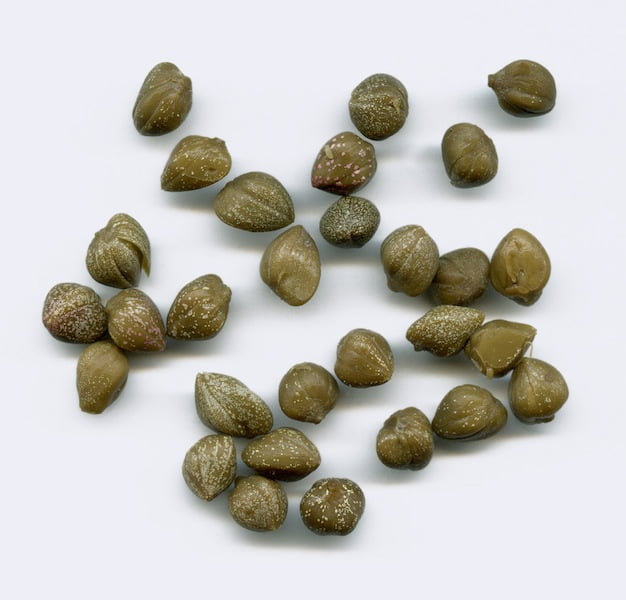
Pickled capers
How to pickle capers: traditionally you just soak them in salt water for a day, then you wash off the salt and store them in white wine vinegar. Alternatively you can age them in coarse salt, stirring occasionally, for a couple of weeks, draining off any liquid. Then you wash off that salt and store them in fresh, dry salt. When you want to use them, just soak the caper buds and wash off all the salt as it’s only there as a preservative. A good brining solution is 40g (1¼oz) of salt to 250ml (8oz) water.
Being flower buds, they’re low in calories at only 23kCal per 100g. They’re high in anti-oxidants and contain good amounts of vitamins A, K, niacin and riboflavin plus minerals like calcium, iron and copper.
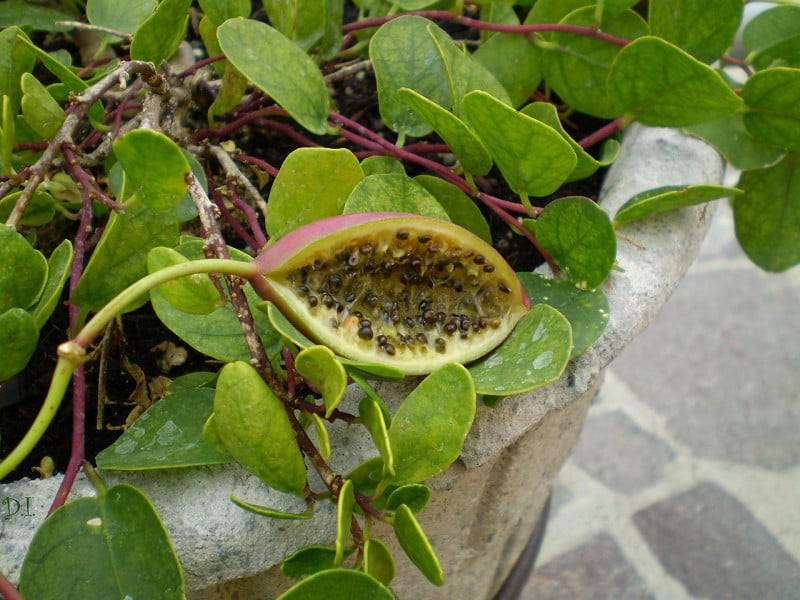
Capparis fruit Photo by Clematis
Where to buy caper bush: Although you can try germinating seed, it’s very difficult unless the seed is super fresh, after which it requires both soaking and stratification (= a couple of months in the fridge). Cuttings taken from 1 year old wood are the most likely to succeed.
In Australia you can order them online from Caper Plants, or Diggers will sometimes have seed. In the USA, contact San Marcos Growers for a retailer near you, or buy online from Easy to Grow Bulbs.com. In the UK, buy caper seed from Chiltern Seeds. In South Africa, you should be able to get caper seeds from Seeds for Africa.
